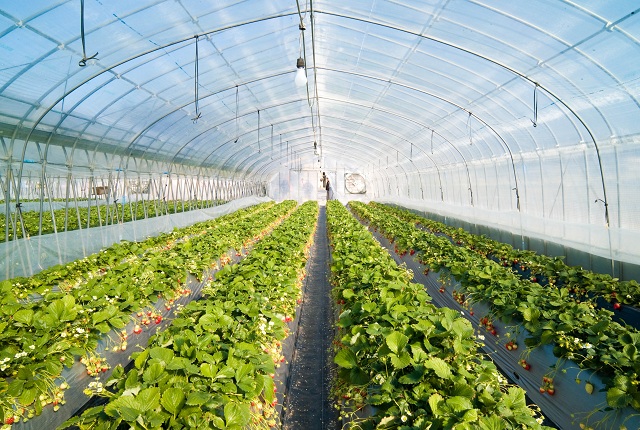Agriculture column: Greenhousing an agricultural project option

Tapuwa Justice Mashangwa
The sun’s energy is transmitted to the earth in the form of short-wave radiation. When this radiation passes through the atmosphere and strikes objects on the earth, it is converted to heat. Outdoors, the heat is lost back to the sky. Clouds and smog act like an insulation blanket, slowing the heat loss. This is why frosts seldom occur on cloudy nights.
According to Greenhouses for Homeowners and Gardeners, by John W Bartok Jr, the glazing on a greenhouse, like clouds in the atmosphere, traps heat within the structure. Some glazings retain heat better than others. For example, adding a second layer of plastic or glass reduces heat loss by about 35 percent.
Placing insulation blankets on a greenhouse can reduce heat loss even further. On cloudy days, supplemental heat may be needed in a greenhouse to maintain a good growing environment for the plants. The temperature inside a closed greenhouse can reach high temperatures relative to the temperature outside. In the summer, the temperature inside a closed, empty greenhouse can rise to more than 40 degrees Celsius. All greenhouses should have some means of venting to cool the structure when it gets too hot for the plants.
The main types of green housing are: Year round greenhouses and Season extender greenhouses. The year-round greenhouse is designed to provide optimum growing conditions all year. It has a heating system to warm the structure on cold winter nights and a ventilation system to cool it on warm summer days.
It may have a solar design to reduce the energy needed for heating and cooling. The year-round greenhouse is ideal for housing a collection of orchids or tuberous begonias or for maintaining a conservatory of decorative plants to provide a changing array of colours throughout the year. It might also be used to provide fresh vegetables and fruits for your table when you cannot pick them from the garden. If your interest is in propagating woody ornamentals or perennials, then the greenhouse can provide the necessary humid climate.
A year-round home greenhouse is usually covered with a more permanent glazing—such as polycarbonate, acrylic, or double glass—to reduce heating costs during the winter. These glazing materials do not require as much maintenance as a plastic film cover.
A season-extender greenhouse is used primarily to lengthen the outdoor growing season. It generally contains limited supplemental heat—perhaps a small electric heater to keep the temperature above freezing on cold nights.
Usually, it is a low-cost structure made with a wood or pipe frame and covered with film plastic glazing.
In early spring, lettuce and cole crops can be planted in a season-extender in containers or beds. These crops can withstand occasional temperatures below freezing. Seedlings are usually started indoors and then moved to the greenhouse when they are transplant size. Warm, sunny days will push the crops ahead, and you can be eating salads before you would have been able to plant seed outdoors.
A second and equally important use for season extenders is starting transplants for the garden. You can grow varieties from a seed catalogue that are not available at the local garden centre. One method is to start crops such as corn, beans, and peas, which are normally seeded directly in the garden, in cell trays in the greenhouse and then transplant them into the rows in the garden. Besides gaining three to four weeks on the season, you will end up with garden rows without skips.
It is best to start the seed in a germinator and then prick the seedlings off into flats for the greenhouse.
Unless you have a very large garden, a home greenhouse will provide plenty of space for the quantity of plants you need.
Engineer Tapuwa Justice Mashangwa is a young entrepreneur based in Bulawayo, Founder and CEO of Emerald Agribusiness Consultancy. He can be contacted on +263739096418 or email: [email protected]









Comments